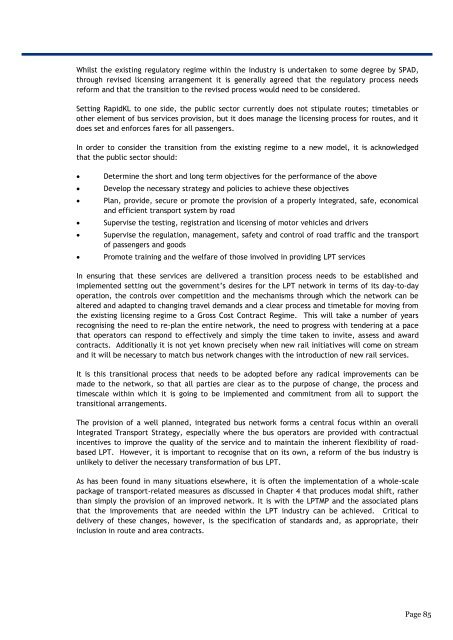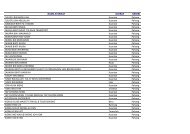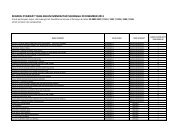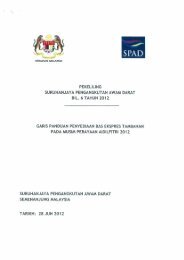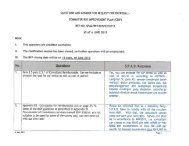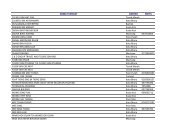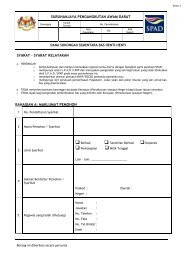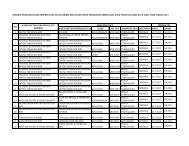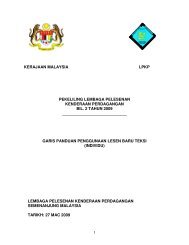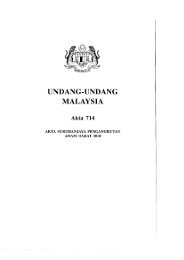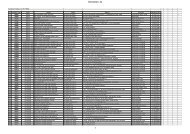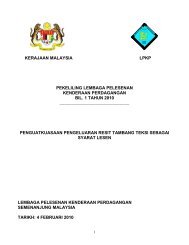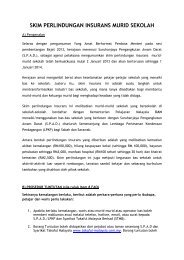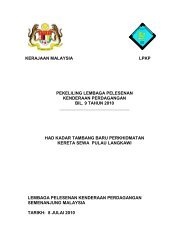Contents - SPAD
Contents - SPAD
Contents - SPAD
Create successful ePaper yourself
Turn your PDF publications into a flip-book with our unique Google optimized e-Paper software.
Whilst the existing regulatory regime within the industry is undertaken to some degree by <strong>SPAD</strong>,<br />
through revised licensing arrangement it is generally agreed that the regulatory process needs<br />
reform and that the transition to the revised process would need to be considered.<br />
Setting RapidKL to one side, the public sector currently does not stipulate routes; timetables or<br />
other element of bus services provision, but it does manage the licensing process for routes, and it<br />
does set and enforces fares for all passengers.<br />
In order to consider the transition from the existing regime to a new model, it is acknowledged<br />
that the public sector should:<br />
<br />
<br />
<br />
<br />
<br />
<br />
Determine the short and long term objectives for the performance of the above<br />
Develop the necessary strategy and policies to achieve these objectives<br />
Plan, provide, secure or promote the provision of a properly integrated, safe, economical<br />
and efficient transport system by road<br />
Supervise the testing, registration and licensing of motor vehicles and drivers<br />
Supervise the regulation, management, safety and control of road traffic and the transport<br />
of passengers and goods<br />
Promote training and the welfare of those involved in providing LPT services<br />
In ensuring that these services are delivered a transition process needs to be established and<br />
implemented setting out the government‟s desires for the LPT network in terms of its day-to-day<br />
operation, the controls over competition and the mechanisms through which the network can be<br />
altered and adapted to changing travel demands and a clear process and timetable for moving from<br />
the existing licensing regime to a Gross Cost Contract Regime. This will take a number of years<br />
recognising the need to re-plan the entire network, the need to progress with tendering at a pace<br />
that operators can respond to effectively and simply the time taken to invite, assess and award<br />
contracts. Additionally it is not yet known precisely when new rail initiatives will come on stream<br />
and it will be necessary to match bus network changes with the introduction of new rail services.<br />
It is this transitional process that needs to be adopted before any radical improvements can be<br />
made to the network, so that all parties are clear as to the purpose of change, the process and<br />
timescale within which it is going to be implemented and commitment from all to support the<br />
transitional arrangements.<br />
The provision of a well planned, integrated bus network forms a central focus within an overall<br />
Integrated Transport Strategy, especially where the bus operators are provided with contractual<br />
incentives to improve the quality of the service and to maintain the inherent flexibility of roadbased<br />
LPT. However, it is important to recognise that on its own, a reform of the bus industry is<br />
unlikely to deliver the necessary transformation of bus LPT.<br />
As has been found in many situations elsewhere, it is often the implementation of a whole-scale<br />
package of transport-related measures as discussed in Chapter 4 that produces modal shift, rather<br />
than simply the provision of an improved network. It is with the LPTMP and the associated plans<br />
that the improvements that are needed within the LPT industry can be achieved. Critical to<br />
delivery of these changes, however, is the specification of standards and, as appropriate, their<br />
inclusion in route and area contracts.<br />
Page 85


